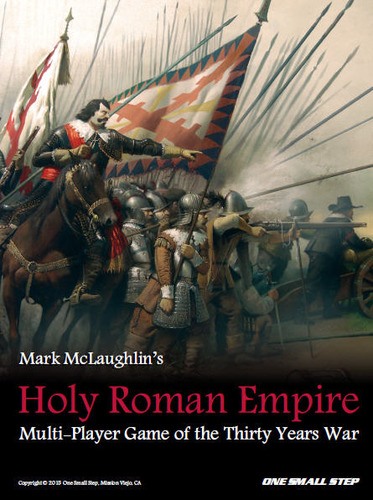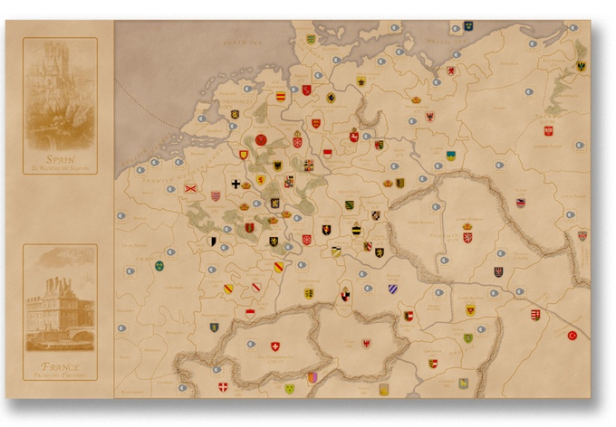
Another great game that I have had the pleasure to discuss with Mark McLaughlin is his Pike & Shot Wargame Holy Roman Empire: The Thirty Years War from One Small Step Games. Mark was really excited to talk about this game and I can see why as it appears to be a wargame that can be played by up to 6 players and involves not only combat, but some diplomacy, alliance creation and subterfuge. I love grand sweeping games and this one fits that bill. Without further ado, here is the interview:
Grant: You seem to love games with a grand and sweeping setting and event. Why did you have a desire to design Holy Roman Empire? How did you set out to incorporate this huge conflict, consisting of almost the whole of Europe, into a playable game?
Mark: Well, as you know, I play miniatures for tactical games, or at least games with toys (Memoir ’44, Battle Cry, etc.) but for board games I love the big picture, the grand sweep. The idea for Holy Roman Empire came about over 30 years ago, when the guys I was playing Pike & Shot era miniatures with wanted a campaign game. Two years ago, Jon Compton of One Small Step asked me if I would like to see this game updated from the old Wargamer Magazine #33 game insert and done as a mounted map game, with much nicer graphics, counters as well as with added expansions. Of course, I agreed and here we are.
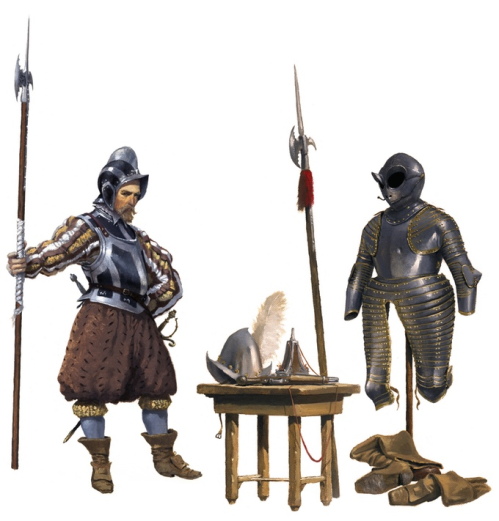
Grant: What is Holy Roman Empire about?
Mark: It is the 30 Years War, which involved the struggle for mastery of central Europe, and the role played by peripheral powers including France, Spain and Sweden – in the internecine fight among the current, Catholic, Holy Roman Emperor and his erstwhile Bavarian ally against the Protestant princes.
Grant: What differentiates this game from others you have designed in the past?
Mark: It was my third published design, and my first to go beyond hexes. It also offered a tactical mini-game for those who wanted to resolve key battles with a little bit of maneuvering on a field rather than just rolling dice.
Grant: How does the political side of the game play out?
Mark: It is not just Catholics vs. Protestants. After all, the French were Catholic, and despite having just come out of a nasty religious war of their own, sided with the Protestant powers. Each player, however, is competing to win on their own. There is no political contest in a two-player game, obviously, but once you start adding players and divvying up the nations that changes with the need for alliances and friends.
Grant: There is war right? How does the war affect the political side? Can you win with one or do you need both?
Mark: This is a WAR game, NOT a political game – the only real politics come into play in the interaction among players in a three or more player games. While you CAN gain minor allies and take control of areas of the map by simply buying them (although Catholics find it very expensive to buy Protestant minors and vice versa) you almost always have to fight for the important ones — namely the seven that cast ballots when the vote for Emperor comes up.
Grant: The game is designed as a 6 player game. How do you play with less? Does it play as well with 3 as 6? Or is it best with 6?
Mark: The fewer players, the more of a WAR game this becomes; the more players, however, the more POLITICS (i.e. player to player diplomacy) comes into it. If you just want to fight the 30 Years War, two players are plenty. The more players, however, the more the game opens up and begins to flower, especially as players compete in bidding wars for neutrals – or to try to undermine an enemy’s (or an ally’s) control of a minor state.
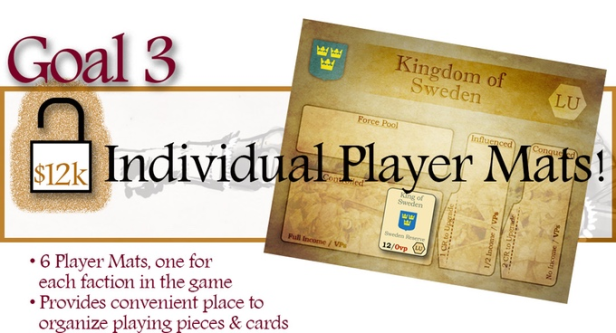
Grant: What information is contained on the Player Mats?
Mark: The Player Mats are a nice place to keep track of which areas you either control, influence or have conquered (each of which comes with its own bonuses), as well as your funds and available troops. There are 6 Player Mats, one for each faction in the game.
Grant: Now onto the meat of the game. What is the sequence of play?
Mark: There are six phases that make up a turn.
1. Random Events
2. Finances
3. Diplomatic Bidding
4. Alliance Declaration
5. Movement/Combat
6. Victory and Game Conclusion Determination
Grant: What type of random events come up and how are they determined?
Mark: Beginning with the 2nd turn of the game, one player rolls two differently colored dice, reading one as the tens and the other as the ones, and consults the Random Events Table. There are 24 things that can happen – all of which are going to be bad for at least one (or perhaps several or even all) players. These range from Pirate Raids on the Spanish, and Russian War for Sweden, to map-board-wide famines, troop riots, revolts, outbreaks of heresy and the death of key leaders – just to name a few. Nothing good comes from the random events, unless of course you count what hurts your enemy as being good for you. Not all of the events come up, however, as there is a one-third chance each turn that nothing happens, and the game has at most 15 turns (7 in the short scenario) and usually less, and you only check this once a turn.
Grant: How are finances determined? Where does income come from?
Mark: The finances come from the cards on your Mat, each of which represent a minor state. If you control them, they produce at full value. If you influence them, they give you half value.
Grant: Under what circumstance does a player resort to charity? If you are in this position, do you have a hope of recovering to win the game?
Mark: You can roll for charity if you are poor (have an income of four or less). You CAN make a come back, as the rich states also tend to have to pay out the most to keep big armies in the field. In a two-player game, you control three big powers – usually at least one if not two have some income; in games with more players, well, you look to your allies for help, letting them know that if you go down, they will be all that weaker for the lack of your support.
Grant: How do you upgrade cards? What new benefit do upgraded cards offer?
Mark: The states you conquer can be upgraded to influence at a cost of two crowns, and those under influence can be upgraded for a mere one crown to controlled – but you can not move a card up by more than one level a turn. Controlled cards give you income and victory points equal to the number on the card; influenced cards are worth half that. Conquered cards yield neither money nor victory points.
Grant: How much do the different type of units cost? What are their maintenance cost?
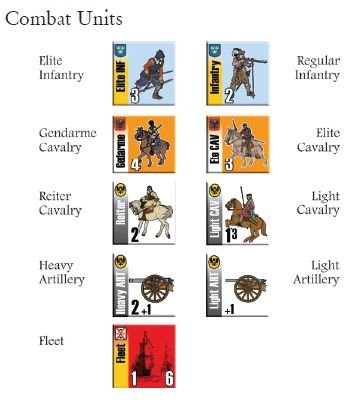
Mark: The cost per unit ranges from a mere 1 crown for a light artillery to 5 crowns for a Gendarme. Each unit, regardless of its value, costs a crown to maintain. A lot of weak units can be bought cheaply, but cost a lot to maintain; a few crack units cost a lot to buy, but as there are fewer of them, the maintenance cost is less.
Grant: What are National Units and what is unique about them?
Mark: The majority of units in the game are generic infantry and cavalry types. There are, however, a set number of them, and players compete to buy those available. There are, however, a few national units (Spanish infantry, Swedish infantry-cavalry-light artillery, French Gendarmes, etc.) that only that power can build. Many of these are elite units, moreover, which take two instead of one hit to kill – and which can be rebuilt from their weakened status to full strength for cheap.
Grant: What are purchase requests and why do players secretly write these down?
Mark: There are only so many units available – intentionally. The war went on for 30 years (hence its name) so the manpower pool was steadily being drained. There just are not that many trained troops available – and more and more of those were mercenaries who served one master for a season, then went home – or went on a rampage. Each player secretly writes down how much they are willing to spend – and for what kinds of troops. A power rarely gets everything it wants. If there are not enough of a type available to satisfy all requests, they are dealt out equally among those who bid for them. This prevents the rich powers from buying up everything, and tends to help level the playing field.
Grant: What is the purpose of the Diplomatic Bidding Phase?
Mark: The minor states of central Europe were quite fickle – and even those that stayed loyal to one cause often extorted stipends to remain so. It is also war by economic means, and lets powers buy states out from under their rivals without having to fight on the field or lay siege. Catholic powers’ money counts more for Catholic states than Protestant ones, and vice versa, which makes holding on to states you have taken from the enemy camp more difficult and more expensive.
Grant: What are Players Influence and Control piles and how do they differ?
Mark: The Conquered states yield neither money nor victory points. Those moved up to Influence yield half their printed value in money and victory points, while those under Control yield their printed value for both. These piles are simply a nice tidy way to keep track of what is what.
Grant: What are State Cards? How are they different?
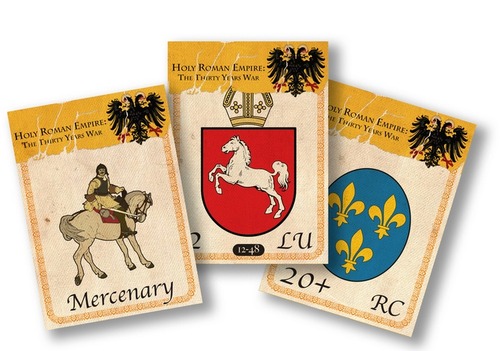
The State Cards are the minor states – and there are a LOT of them. They vary in their religious affiliation and monetary/victory point value. Some also come with their own armies – which can range from a single elite infantry to a full-blown army (the Dutch, for example). Some are also marked with an Elector’s Crown – which counts when voting for a Holy Roman Emperor.
Grant: What are Mercenary Cards and who do each of the four represent? Why would a player discharge or assassinate these Mercenary Cards?
Mark: There were many generals who fought more for themselves than for any cause or religion. Getting them – and keeping them – costs money or even cards. These generals, however, also tend to be the better ranking ones, which means they can lead more troops and gain more bonuses in combat and siege. There are also only a few leaders available to each power, and as you need leaders to move troops about, the mercenaries become more and more necessary.
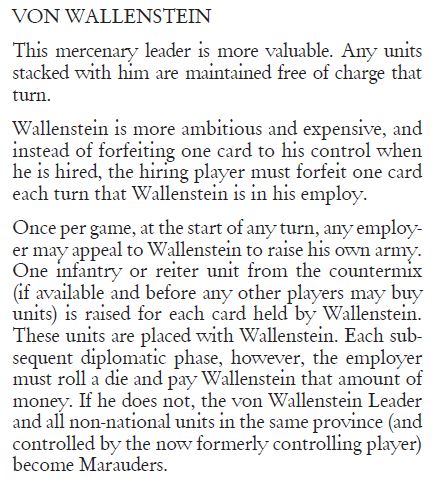
Each of the four is an historical character, with Wallenstein easily the most famous – or infamous. He fought for the empire – but expected to be well-rewarded for his services and not just with money, but with land and titles. He literally got so big for his britches that the Jesuits had him assassinated.
Players might assassinate a general for the same reason – he becomes too expensive to maintain and the cards and troops he controls go up for bid if he dies.
Grant: How is the Alliance Phase handled and how does this affect the game? What happens when a player breaks an Alliance?
Mark: The Alliance Phase is where players join others to make war on other players or groups of players. An alliance locks players into an arrangement for the turn in which they will not bid for cards on each other’s Mat, and in which they can move their armies together and fight together. Unlike some games where players can stab each other in the back without warning, in HRE you at least get formal warning of such a betrayal.
Grant: What naval units are in the game? What role do naval units play?
Mark: The 30 Years War was a land war, but there was some action at sea. The navies are important to those players who wish to move armies by sea (notably the Swedes) and, in the case of the Spanish and French especially, for control of the off-board zones, which yield victory points. There are rarely more than a few navies in play at any one time, and there are only a handful available to build.
Grant: What is the movement system based upon? Are their Zones of Control?
Mark: The game is area movement, and units require leaders to move them. Leaders expend NO movement points to enter friendly areas (those which contain a political marker of their own or their allies) but start spending points when they enter those that are hostile. If there are enemy forces in that area, they can either say “stop” and force the moving leader to stop and fight, or they can fall back into a fortress, allowing the moving leader the option of either staying and starting a siege – or moving on. There are thus no Zones of Control – but a player can force an enemy to stop if they are willing to fight him.
Grant: How does Forced March work and what modifies its roll?
Mark: A leader has three movement points, but can increase that to 4 or 5 if the player wants. It is a simple die roll for EACH unit that accompanies him – on a 1-4 it makes it, on a 5 it does not go forward with the leader and on a 6 it dies. Cavalry units subtract from that die, artillery add to it. Leaders subtract one or two from the die, and if they are going for the full five movement points, add 2.
Grant: What are Off-Board Zones and what role do they play in the game?
Mark: The Spanish and French fight for control of Off-Board Zones. These give them victory points but also allow them to move about the map. These areas represent the Bay of Biscay and the provinces along the Franco-Spanish border.
Grant: What is the Combat Procedure like? What role do Leaders and Artillery play in combat?
Mark: In the basic combat, the units have a combat value. Combat is usually simultaneous (except when one side is crossing a river or storming a fortress). Each unit rolls a die. A unit adds to that die if it has a light or heavy artillery with it. A leader can also add to that die for one unit. The result is the number you need to roll at or under to score a hit. (1s always hit, 6s always miss). If the battle occurs in mountains or forests, or across rivers or passes, or is a storm of a fortress there are modifiers. With the optional tactical Battle Board (see below), however, this system is modified in that you set up battlefields on a 6 x 6 or (for big battles) a 6 x 12 square grid, complete with rivers, hills, towns, forests, etc. There are separate rules (actually, an entire separate rules booklet) governing those tactical fights. They offer players the ability to outmaneuver their enemy, take advantage of key terrain features, etc.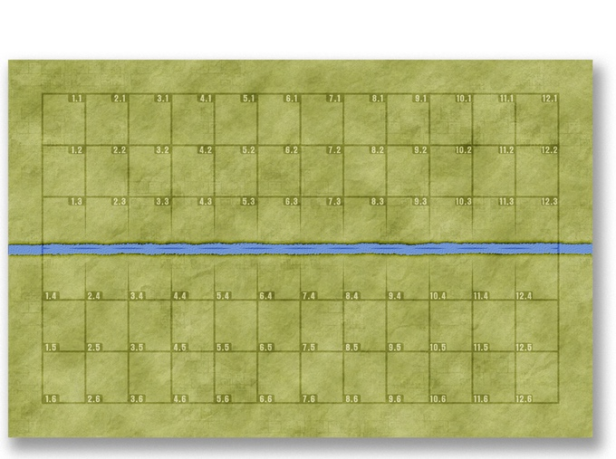
Grant: How does terrain modify combat?
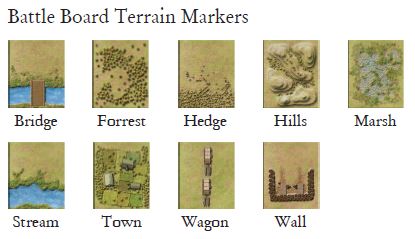
Mark: The battle board terrain features modify – or prevent – combat for certain units (cavalry, for example, cannot charge a fortress wall – but they can be dismounted and traded in for infantry that can). On the strategic map, cavalry take a negative modifier in battles in areas with mountains or forests, and armies coming over a river are subject to a free round of fire from the defenders.
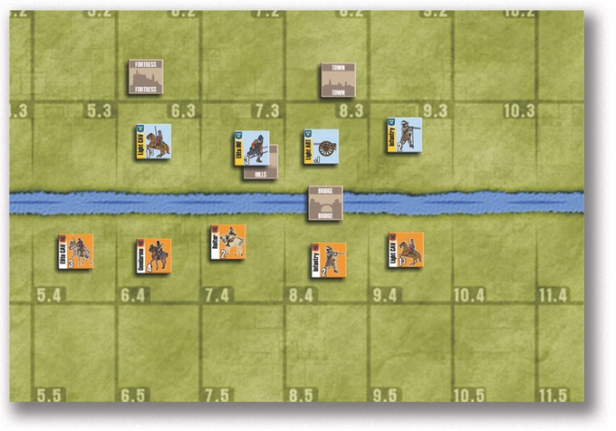 Grant: What happens when Leaders are captured? How are they exchanged?
Grant: What happens when Leaders are captured? How are they exchanged?
Mark: The players can make any deal that is legal to trade or sell or give captured leaders back – or they can just kill them.
Grant: How does fortress combat work?
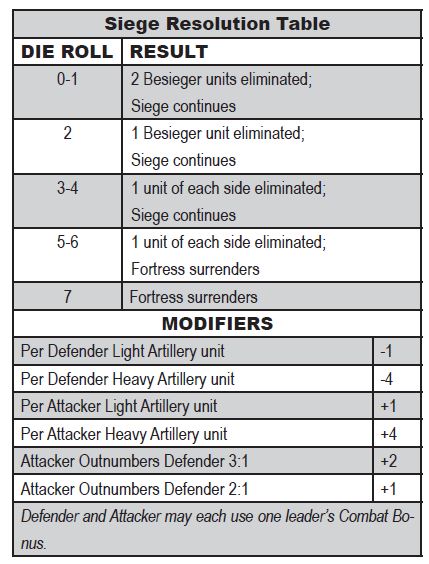
Mark: There is a simple siege roll on the strategic map – the stronger the besieger, the more likely the fortress will surrender. Most of the time, one side or the other will lose a unit or maybe two and the siege will continue until one side is eliminated or leaves the battle. There is also a storm the fortress combat resolution for those too impatient to sit and siege – it is much like the regular combat, but with modifiers and with the defender firing first rather than simultaneously with the attacker.
Grant: How does looting of a fortress work after a successful attack or siege?
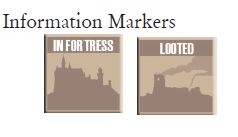
Mark: The army that takes a fortress can loot it, which means simply gaining money and destroying the fortress, making the area worth less income and harder to defend. But if the area is regularly contested, it can be done as a strategic move to affect future struggle over the area.
Grant: What are the Imperial Rules and how do they change the game?
Mark: There are seven electors – as noted on seven of the cards. If one player or alliance controls four of the seven, they can call for an election for Emperor. The Holy Roman Emperor not only gains control of several cards, but can also call for a Diet, in which he can propose one of three game-changing events. One is the Edict of Restitution, which helps Catholic powers bid for states and gives the Emperor money from the Pope. The opposite is the Edict of Restitution, which helps the Protestants in their bids. Then there is the Ban on Foreign Troops which can send some national troops back home.
Grant: How is victory determined? How long do games usually last?
Mark: The full game CAN last up to 15 turns – but rarely does, as there is a variable ending die roll and an automatic victory condition (a player has 30 or more cards on their mat AND is either the Emperor or has four of the electors in their control). There is also a short scenario that starts on turn 7 – and which can also end long before that turn 15 mark is reached.
The more players there are, the longer the game will take to play out. A short scenario with two players rarely takes longer than two hours; a full game will usually take about four hours or so.
Grant: What are the different scenarios included in the game?
Mark: There are only two scenarios – campaign or short (the Swedish War).
Grant: What do players like most about the game? What would you like to add to the game?
Mark: The game can be either a fluid free-for-all, a Team Catholic vs. Team Protestant, or some combo of us-vs.-them, or us-vs.-them-vs. him; that all depends on how many people are playing the game and what they are looking for. Do they want a straight war game, or something with more diplomacy and wheeling and dealing? As for adding anything – no, I got everything I wanted in the game – AND got to do two expansions, which I like even better than the big game itself.
Grant: Tell us what the two expansions HRE: Battles of the Thirty Years War and HRE: Battles of the English Civil War add to the game?
Mark: The two expansions offer a dozen tactical battles of each conflict of their name, along with more counters to use in those battles. If you like Memoir ’44, Battle Cry, Hold the Line, or any simple tactical system, etc. but want to play out battles of the pike and shot era, these expansions offer neat, quick playing tactical combats that are easy to learn and offer a variety of tactical problems.
These also make for great scenarios for miniatures games – which is how I got started on this in the first place 35 years ago. I actually have a quadruple size blow up of the tactical map and use painted 15mm soldiers of the period to fight out these scenarios.
Grant: What does the future of HRE hold with further expansions?
Mark: There are more battles from the era that could be added in a further expansion, but I think I got the 12 best of each (30 Years War, English Civil War) in the two expansions, so I have no urgency to add a third – but I could.
Thanks for the great interview Mark and I am excited to give this game a try. There are not many wargames out there that allow for up to 6 players so this one is unique.
If you are interested in purchasing the game here is the link to the game page on One Small Step Games website: http://ossgamescart.com/index.php?main_page=product_info&cPath=6&products_id=71
– Grant

